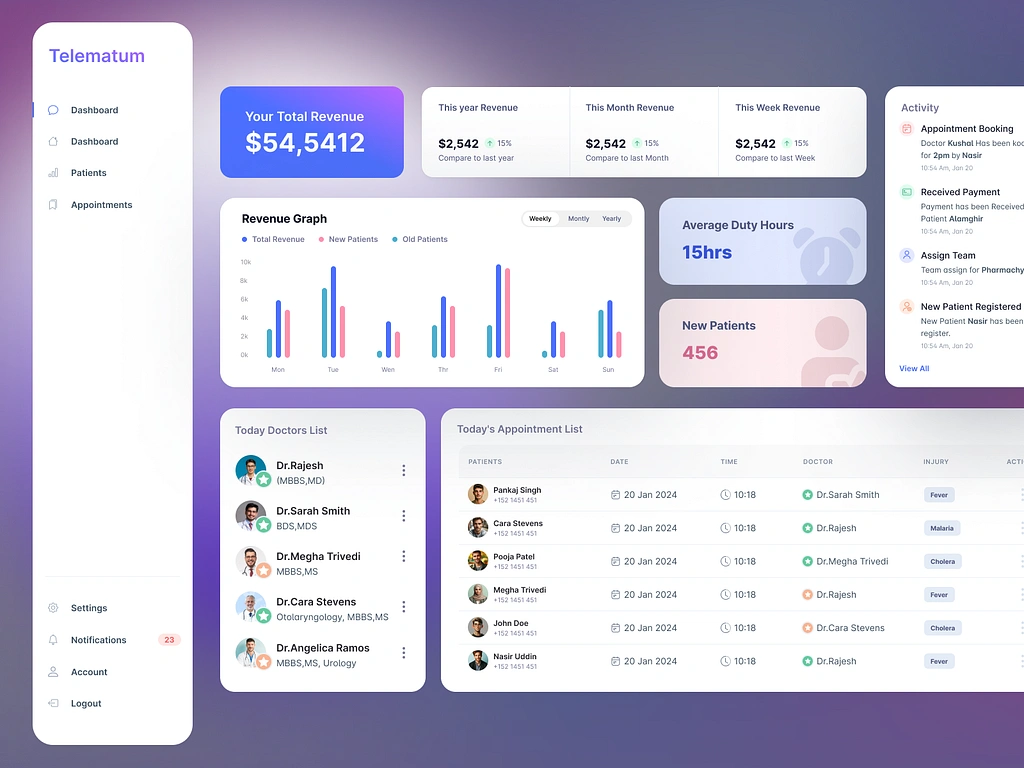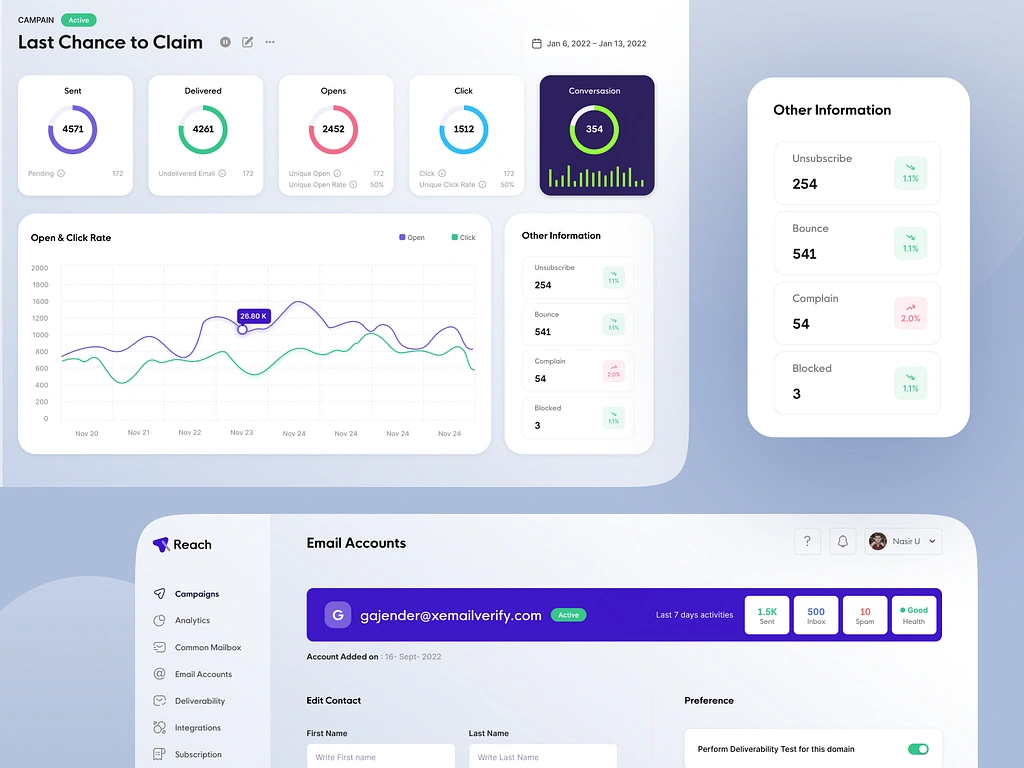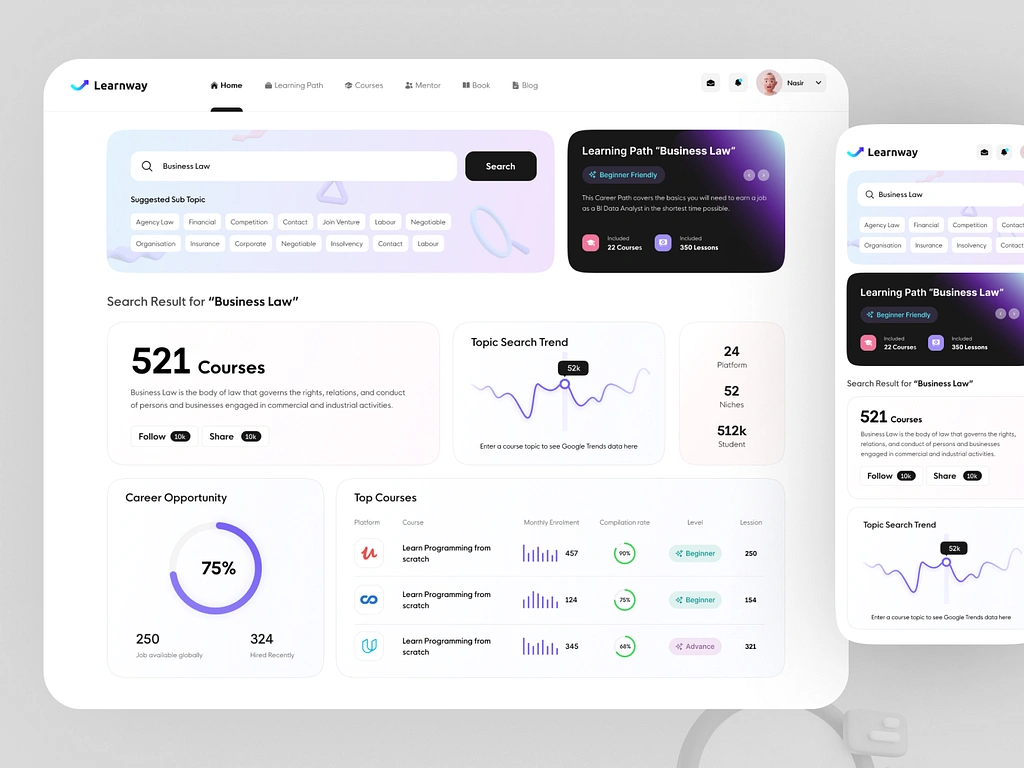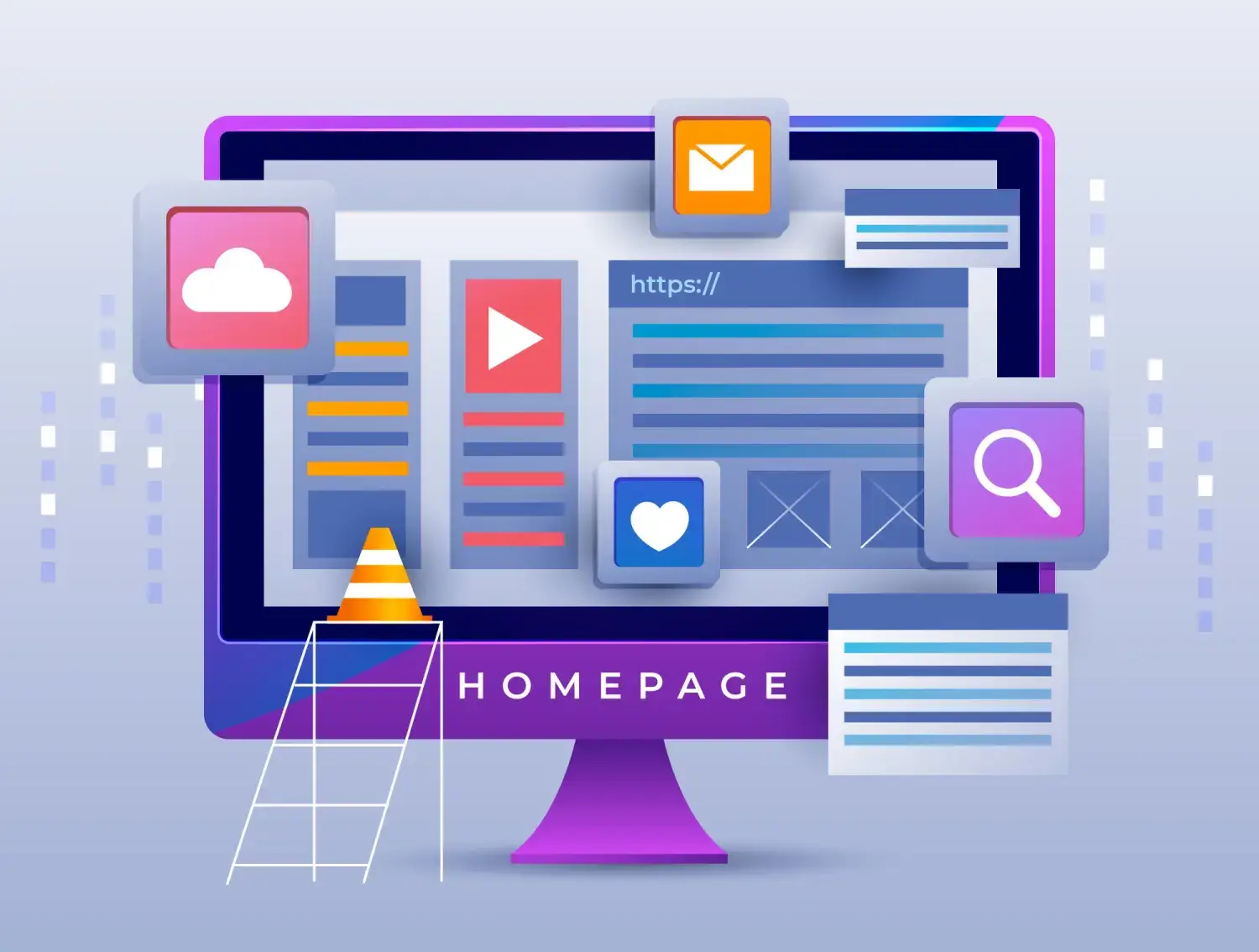In the ever-evolving world of software-as-a-service, where innovation is the key to staying ahead, one often overlooked yet vital component can make or break the user experience: the sidebar. Imagine navigating a complex SaaS application without an intuitive sidebar guiding your journey. It’s akin to wandering through a crowded city without a map—frustrating and disorienting. This humble visual element, when masterfully executed, becomes a powerful tool that enhances navigation, boosts engagement, and streamlines workflows. In this ultimate UX guide, we delve into the art of crafting the perfect sidebar, unraveling the mysteries behind exceptional SaaS design strategies that prioritize user-centric experiences.
Beyond the basic functionality of listing options, sidebars in UX design hold the potential to become your application’s silent partner in success. They can transform a cluttered interface into a seamless journey, where users find exactly what they need, precisely when they need it, without the distraction of unnecessary frills. From responsive designs that adapt to any screen size, to thoughtful incorporation of user feedback, this guide covers every angle of sidebar optimization. By the end, you’ll be equipped with the knowledge to transform your SaaS platform into a paragon of user efficiency and satisfaction. Let’s embark on this journey to perfect sidebars, and revolutionize how your users interact with your digital space.
Understanding the Role of Sidebars in SaaS Design
Before we dive into the nitty-gritty of designing the perfect sidebar, it’s essential to understand its role in SaaS design. A sidebar serves as a navigation tool, providing users with quick access to various features and functionalities within an application. It acts as a visual guide, allowing users to effortlessly explore different sections and perform tasks without getting lost in a maze of menus.
In UX design, sidebars play a crucial role in organizing information and creating a seamless user experience. They help users navigate through complex interfaces by presenting relevant options and actions in a structured manner. By strategically placing important elements within the sidebar, designers can enhance usability and improve overall user satisfaction.
When designing sidebars for SaaS applications, it’s crucial to keep the target audience in mind. Understanding their needs, preferences, and workflows will enable you to create a sidebar that aligns perfectly with their expectations. Conducting user research and gathering feedback will provide valuable insights into how your target users interact with your application and what they expect from its navigation system.
The Fundamentals of Sidebar Navigation
A well-designed sidebar should prioritize ease of use and intuitive navigation. To achieve this, consider implementing these fundamental principles:
- Clear Hierarchy: Organize the content within your sidebar based on importance and relevance. Use headings, subheadings, or dividers to create visual separation between different sections.
- Consistent Icons: Use recognizable icons that are consistent throughout your application. Icons should be intuitive and easily understood by users.
- Breadcrumb Navigation: Incorporate breadcrumb navigation within your sidebar to provide users with context about their current location within the application hierarchy.
- Search Functionality: Include a search bar within the sidebar to allow users to quickly find specific features or content.
By adhering to these fundamental principles, you can create a sidebar that enables users to navigate your SaaS application effortlessly.
Designing for User-Centric Experiences
In the realm of UX design, user-centricity is paramount. When it comes to sidebars, designing with the user in mind means prioritizing their needs and preferences. Here are some tips for creating user-centric sidebar experiences:
- Minimalism: Keep your sidebar design clean and clutter-free. Avoid overwhelming users with too many options or excessive visual elements.
- Relevance: Only include features and functionalities in the sidebar that are directly related to the user’s tasks and goals. Irrelevant options will only confuse and distract users.
- Prioritization: Place frequently used or essential features at the top of the sidebar for easy access. This ensures that users can quickly find what they need without scrolling extensively.
- User Testing: Conduct usability tests with real users to gather feedback on your sidebar design. This will help identify any pain points or areas for improvement.
By adopting a user-centric approach, you can create sidebars that seamlessly integrate into your SaaS application, enhancing usability and overall user satisfaction.
Responsive Sidebar Layouts: Ensuring Seamless Adaptability
In today’s mobile-driven world, responsive design is no longer optional—it’s essential. Your sidebar should adapt seamlessly across different screen sizes and devices without compromising functionality or aesthetics.
To ensure a responsive sidebar layout, consider the following:
- Flexible Width: Design your sidebar with a flexible width that can expand or collapse based on the available screen space. This allows users to prioritize content based on their preferences.
- Icon-Only Mode: Implement an icon-only mode for smaller screens to maximize space utilization. Users can access expanded text labels by hovering over or tapping on the icons.
- Scrollable Sidebar: If your sidebar contains numerous options, consider implementing a scrollable sidebar for easy navigation on smaller screens.
A responsive sidebar layout ensures that users can access all the necessary features and functionalities regardless of the device they are using, providing a consistent and seamless experience.
Incorporating User Feedback for Sidebar Optimization
User feedback is invaluable when it comes to optimizing your sidebar design. By actively seeking input from your users, you can identify pain points, uncover usability issues, and make informed design decisions.
Here are some ways to incorporate user feedback for sidebar optimization:
- User Surveys: Conduct surveys to gather insights into how users perceive and interact with your sidebar. Ask specific questions about usability, clarity of options, and overall satisfaction.
- User Interviews: Conduct one-on-one interviews with selected users to gain deeper insights into their experiences. Encourage them to share their thoughts on what works well and what could be improved in the sidebar design.
- Analytics Data: Analyze user behavior data such as click-through rates and time spent in different sections of the application. This data can provide valuable insights into which features are most frequently used or overlooked within the sidebar.
By actively listening to your users and incorporating their feedback, you can continuously optimize your sidebar design to meet their evolving needs and expectations.
Streamlining Workflows with Intuitive Sidebar Features
A well-designed sidebar can significantly streamline workflows within your SaaS application. By incorporating intuitive features, you can enhance user productivity and efficiency.
Consider implementing the following intuitive sidebar features:
- Drag-and-Drop Functionality: Allow users to rearrange items within the sidebar based on their preferences. This empowers users to customize their workflow and prioritize frequently used features.
- Favorites or Bookmarks: Enable users to bookmark frequently accessed features or sections for quick access. This eliminates the need for repetitive navigation and saves valuable time.
- Contextual Menus: Implement contextual menus within the sidebar that provide additional options or actions based on the user’s current context. This reduces the need for navigating through multiple screens.
By providing these intuitive features, you can empower users to work more efficiently within your SaaS application, ultimately enhancing their overall experience.
Balancing Functionality and Minimalism in Sidebar Design
The key to designing an effective sidebar lies in striking a balance between functionality and minimalism. While it’s important to provide users with access to essential features, overwhelming them with too many options can lead to confusion and frustration.
To achieve this balance, follow these guidelines:
- Prioritize Essential Features: Identify the core functionalities that are crucial for your users’ tasks. Place these prominently in the sidebar while keeping secondary options less prominent or nested under relevant headings.
- Progressive Disclosure: Use progressive disclosure techniques to reveal additional options or submenus only when needed. This prevents overwhelming users with a cluttered sidebar.
- Consistent Visual Language: Maintain a consistent visual language throughout your sidebar design. Use similar colors, typography, and iconography to create a cohesive and visually pleasing experience.
By carefully balancing functionality and minimalism, you can create a sidebar that is both aesthetically pleasing and highly functional, enhancing the overall user experience.
Enhancing Engagement Through Interactive Sidebar Elements
A well-designed sidebar can do more than just provide navigation—it can also enhance user engagement within your SaaS application. By incorporating interactive elements, you can encourage users to explore and interact with different features.
Consider the following interactive sidebar elements:
- Notifications: Display real-time notifications within the sidebar to keep users informed about important updates or events.
- Social Sharing: Allow users to share content or achievements directly from the sidebar, making it easy for them to engage with their network.
- Gamification Elements: Incorporate gamification elements such as progress bars or achievement badges within the sidebar to motivate users and drive engagement.
By adding these interactive elements, you can transform your sidebar into an engaging hub that encourages users to explore more of what your SaaS application has to offer.
Ensuring Consistency Across Different Pages
A consistent user experience is crucial for any SaaS application. This includes maintaining consistency in your sidebar design across different pages and sections of your application.
To ensure consistency in your sidebar design:
- Visual Elements: Use consistent colors, typography, and iconography throughout your sidebar design. This creates a cohesive visual language that users can easily recognize and associate with your brand.
- Layout: Maintain a consistent layout for your sidebar across different pages. Users should be able to rely on the sidebar’s position and structure to navigate through the application seamlessly.
- Naming Conventions: Use consistent naming conventions for options and sections within the sidebar. This reduces confusion and helps users quickly find what they’re looking for.
By ensuring consistency in your sidebar design, you create a familiar and intuitive user experience that instills confidence in your application.
Elevating User Experience Through Perfect Sidebar Integration
In conclusion, sidebars play a crucial role in SaaS design by providing users with an intuitive navigation system that enhances their overall experience. By understanding the fundamentals of sidebar navigation, designing for user-centric experiences, ensuring responsive layouts, incorporating user feedback, streamlining workflows, balancing functionality and minimalism, enhancing engagement through interactive elements, and maintaining consistency across different pages, you can perfect the integration of sidebars into your SaaS application.
A well-designed sidebar will not only improve usability but also boost user satisfaction and productivity. So take the time to analyze your target audience’s needs and preferences, conduct thorough user research, and continuously optimize your sidebar design based on valuable feedback. By prioritizing the perfect integration of sidebars into your SaaS design strategies, you can elevate the overall user experience of your application.
If you’re ready to take your SaaS application to the next level with a perfectly designed sidebar that enhances user experience and drives engagement, our team of expert designers is here to help. Contact us today to discuss your design needs and let us create a sidebar that will revolutionize how your users interact with your digital space.












